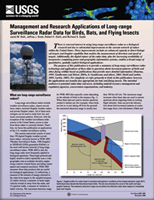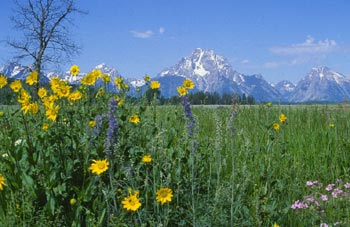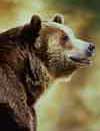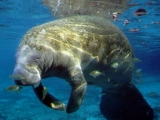- Home
- About S&T
- Taxa/Organisms
- Ecosystems
- Issues
- Methods & Tools
- Reports & Publications
- Location
- Search
Publisher: USGS | Science Center: Fort Collins Science Center (FORT, Ft. Collins) | Format: URL
www.fort.usgs.gov — This publication is intended to provide a summary of long-range surveillance radar technology and applications of these data to questions about movement patterns of birds and other flying wildlife based on publications that provide more detailed information (Buurma, 1995; Gauthreaux and Belser, 2003a, b; Gauthreaux and others, 2003; Diehl and More...

Publisher: USGS | Science Center: Northern Rocky Mountain Science Center (NRMSC, Bozeman) | Format: URL
nrmsc.usgs.gov — This research summary gives an overview of sign surveys to detect bear population trends in designated wilderness and national park lands. The Northern Continental Divide Ecosystem has the best long-term prospects of supporting a viable grizzly bear population among the six areas designated as grizzly bear recovery zones in the United States. Yet More...

Publisher: USGS | Science Center: Northern Rocky Mountain Science Center (NRMSC, Bozeman) | Format: .PDF
nrmsc.usgs.gov — This web publication describes the Noninvasive Methods to Monitor Bear Population Trends. The U.S. Geological Survey is beginning a new grizzly bear research project this summer in the Northern Continental Divide Ecosystem (NCDE) of northwestern Montana. This work is based on hair collection and DNA analysis methods similar to those used in the More...

Publisher: USGS | Science Center: Northern Rocky Mountain Science Center (NRMSC, Bozeman) | Format: URL
www.nrmsc.usgs.gov — Overview of a study of Bighorn sheep habitat use and demographics in the Many Glacier area of Glacier National Park. Study will document seasonal ranges and migration routes and evaluate habitat use and selection. Habitat use will be modeled, and those models will be extrapolated across the Park to predict occurrences of critical habitats and More...

Publisher: NBII | Format: URL
www.nbii.gov — Natural resource managers face complex decisions that require a clear understanding of the status of wildlife populations and their habitats. Monitoring is key to making effective management decisions and evaluating the outcomes of those decisions. The goal of NRMP is to improve the accessibility of monitoring efforts to resource managers to aid More...

Publisher: USGS | Science Center: Fort Collins Science Center (FORT, Ft. Collins) | Format: URL
www.fort.usgs.gov — Natural Resource Monitoring Partnership (NRMP) is a collaborative effort by the natural resource management community to improve monitoring efforts in order to support effective evaluation and decision-making by sharing information on monitoring projects and protocols. The Natural Resource Monitoring Partnership was built for easy access to More...

Publisher: USGS | Science Center: Northern Rocky Mountain Science Center (NRMSC, Bozeman) | Format: URL
www.nrmsc.usgs.gov — To devise credible strategies for managing human-wildlife conflicts, managers need information about the importance of specific areas to particular species. In the Greater Yellowstone Area, for example, development of low-elevation areas seriously threatens vital ungulate winter ranges, with obvious implications for both ungulates and their More...

Publisher: USGS | Science Center: Northern Rocky Mountain Science Center (NRMSC, Bozeman) | Format: URL
www.nrmsc.usgs.gov — An overview of the population status and trend monitoring efforts for grizzly bears in the Greater Yellowstone Ecosystem during the 2002 field season. Contains statement of problem, objectives, methodology, communication plan, and highlights and key findings.

Publisher: USGS | Science Center: Biological Informatics | Format: URL
biology.usgs.gov — This web page presents samples of genetics and genomics research from the USGS Biological Resources Discipline about the conservation genetics of mammals.
